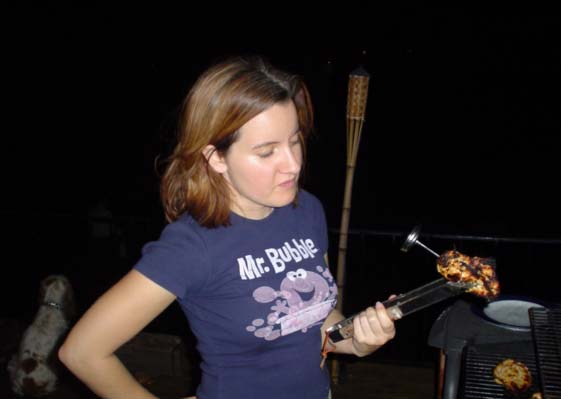Mmm…nothing starts off the semester like a well-charred burger and a heaping pile of tater salad. But like Ron White, this tater salad should not be out in pub-lic.
I was recently a guest at a “welcome back” picnic along with about fifty other students. A few of the dozen or so faculty in attendance grilled up a box full of beef patties and tossed them in a pile for us all to assemble and consume in traditional picnic fashion. I looked them over, picked a luke warm specimen out of the bunch and threw it on a bun with ketchup. But was it done? It certainly looked done, but charred as it may appear, color is no indicator of doneness.
The star of the show, however, was really the five tubs of Kroger brand Mustard Potato Salad lying open on the adjacent table. “Poop Salad" as it was recently dubbed by a ColumbusING blogger from Columbus, Ohio, where E. coli O157:H7 was found in the salads during a routine safety check. This was after the product was distributed and sold, of course. (That’s just the way these things work.) So Kroger did the socially responsible thing and issued a recall in attempt to remove the possibly tainted salad out of the refrigerators of innocent people and dispose of it properly.
So how does a recall happen? The information goes out: newspapers are picking up the story, TV news crews are spreading the word, satellites in outer space are linking up… but people are sitting around eating recalled potato salad like there’s just a little guy in a booth tapping Morse code and sad little beepings just can’t keep up.
It’s sad that it seems so true. Somebody out there is not keeping up. But who? During the recent Castleberry chili recall people were still eating the stuff, not knowing there could be a botulism toxin inside, weeks after the recall was announced.
How do we get people to care about the safety of the food they eat? “I was tainted on a production line (possibly),” the tater salad cries. “You threw me…in-to pub-lic.” But the public isn’t paying any attention.
Casey Wilkinson is an undergrad research student at iFSN, and she loves her mom’s tater salad.

 In college football, the
In college football, the 
 In last night’s episode of
In last night’s episode of .jpg) Andrew Wadge is the chief scientist for the U.K. Food Standards Agency;
Andrew Wadge is the chief scientist for the U.K. Food Standards Agency; .jpg)
.jpg)
.jpg) The
The 

